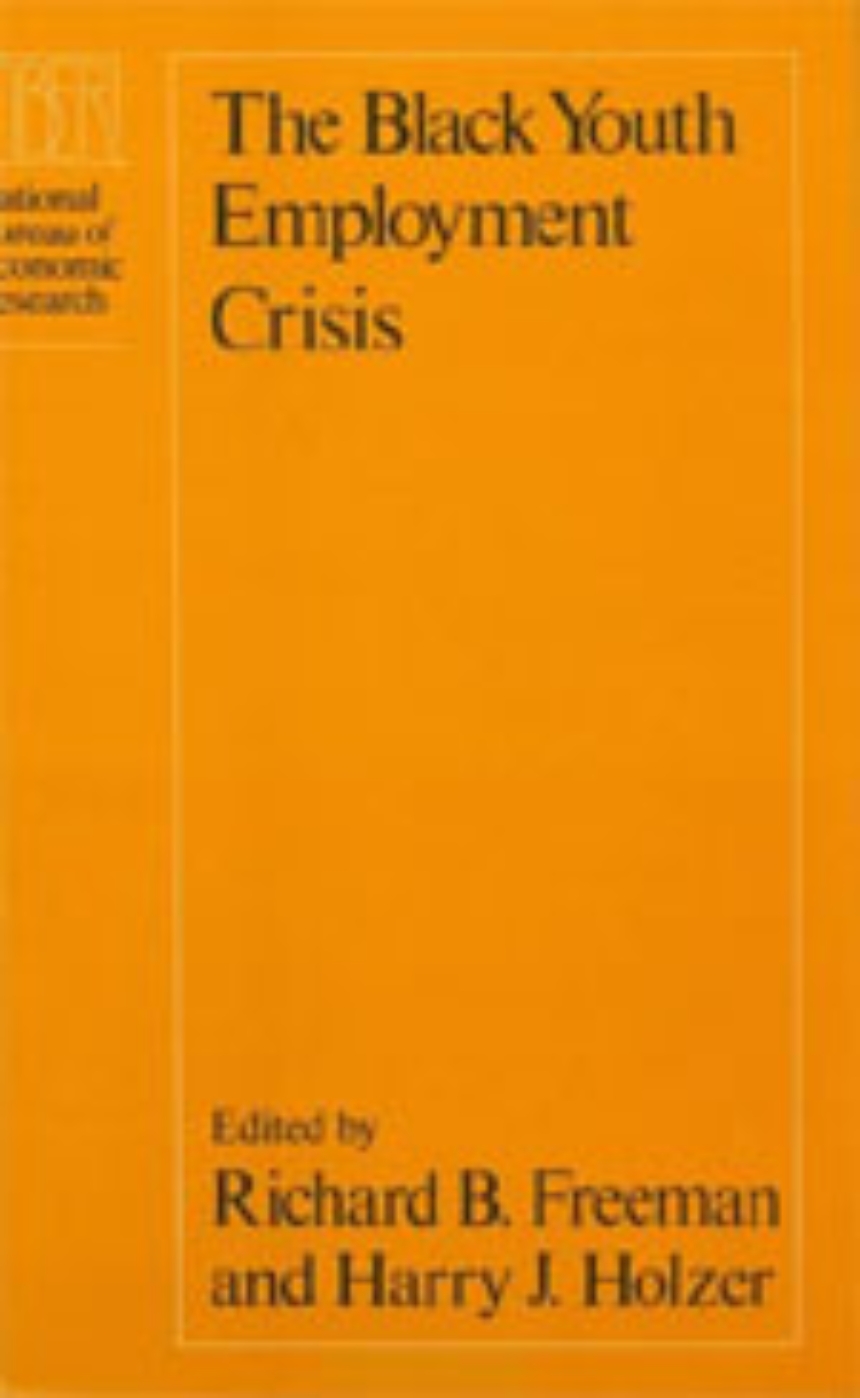The Black Youth Employment Crisis
In recent years, the earnings of young blacks have risen substantially relative to those of young whites, but their rates of joblessness have also risen to crisis levels. The papers in this volume, drawing on the results of a groundbreaking survey conducted by the National Bureau of Economic Research, analyze the history, causes, and features of this crisis. The findings they report and conclusions they reach revise accepted explanations of black youth unemployment.
The contributors identify primary determinants on both the demand and supply sides of the market and provide new information on important aspects of the problem, such as drug use, crime, economic incentives, and attitudes among the unemployed. Their studies reveal that, contrary to popular assumptions, no single factor is the predominant cause of black youth employment problems. They show, among other significant factors, that where female employment is high, black youth employment is low; that even in areas where there are many jobs, black youths get relatively few of them; that the perceived risks and rewards of crime affect decisions to work or to engage in illegal activity; and that churchgoing and aspirations affect the success of black youths in finding employment.
Altogether, these papers illuminate a broad range of economic and social factors which must be understood by policymakers before the black youth employment crisis can be successfully addressed.
The contributors identify primary determinants on both the demand and supply sides of the market and provide new information on important aspects of the problem, such as drug use, crime, economic incentives, and attitudes among the unemployed. Their studies reveal that, contrary to popular assumptions, no single factor is the predominant cause of black youth employment problems. They show, among other significant factors, that where female employment is high, black youth employment is low; that even in areas where there are many jobs, black youths get relatively few of them; that the perceived risks and rewards of crime affect decisions to work or to engage in illegal activity; and that churchgoing and aspirations affect the success of black youths in finding employment.
Altogether, these papers illuminate a broad range of economic and social factors which must be understood by policymakers before the black youth employment crisis can be successfully addressed.
480 pages | 6 x 9 | © 1986
National Bureau of Economic Research Project Report
Economics and Business: Business--Industry and Labor
Political Science: Public Policy
Table of Contents
Acknowledgments
I. The Black Youth Employment Crisis
The Black Youth Employment Crisis: Summary of Findings
Richard B. Freeman and Harry J. Holzer
II. The Nature and Pattern of Change
1. Black Youth Nonemployment: Duration and Job Search
Harry J. Holzer
Comment: Ronald G. Ehrenberg
2. Transitions between Employment and Nonemployment
John Ballen and Richard B. Freeman
Comment: Gary Chamberlain
3. Layoffs, Discharges, and Youth Unemployment
Peter Jackson and Edward Montgomery
Comment: James L. Medoff
III. Causes: Demand
4. The Spatial Mismatch Hypothesis: Are There Teenage Jobs Missing in the Ghetto?
David T. Ellwood
Comment: Jonathan S. Leonard
5. The Demographic Determinants of the Demand for Black Labor
George J. Borjas
Comment: Daniel S. Hamermesh
6. Brothers of a Different Color: A Preliminary Look at Employer Treatment of White and Black Youth
Jerome Culp and Bruce H. Dunson
Comment: Paul Osterman
7. Do Better Jobs Make Better Workers? Absenteeism from Work Among Inner-City Black Youths
Ronald Ferguson and Randall Filer
Comment: Charles Brown
IV. Causes: Supply
8. Market Incentives for Criminal Behavior
W. Kip Viscusi
Comment: James W. Thompson and James Cataldo
9. Who Escapes? The Relation of Churchgoing and Other Background Factors to the Socioeconomic Performance of Black Male Youths from Inner-City Poverty Tracts
Richard B. Freeman
10. The Effects of Attitudes and Aspirations on the Labor Supply of Young Men
Linda Datcher-Loury and Glenn C. Loury
Comment: Michael J. Piore
11. Do Welfare Programs Affect the Schooling and Work Patterns of Young Black Men?
Robert Lerman
Comment: Samuel L. Meyers, Jr.
Appendix: NBER-Mathematica Survey of Inner-City Black Youth: An Analysis of the Undercount of Older Youths
John Bound
List of Contributors
Author Index
Subject Index
I. The Black Youth Employment Crisis
The Black Youth Employment Crisis: Summary of Findings
Richard B. Freeman and Harry J. Holzer
II. The Nature and Pattern of Change
1. Black Youth Nonemployment: Duration and Job Search
Harry J. Holzer
Comment: Ronald G. Ehrenberg
2. Transitions between Employment and Nonemployment
John Ballen and Richard B. Freeman
Comment: Gary Chamberlain
3. Layoffs, Discharges, and Youth Unemployment
Peter Jackson and Edward Montgomery
Comment: James L. Medoff
III. Causes: Demand
4. The Spatial Mismatch Hypothesis: Are There Teenage Jobs Missing in the Ghetto?
David T. Ellwood
Comment: Jonathan S. Leonard
5. The Demographic Determinants of the Demand for Black Labor
George J. Borjas
Comment: Daniel S. Hamermesh
6. Brothers of a Different Color: A Preliminary Look at Employer Treatment of White and Black Youth
Jerome Culp and Bruce H. Dunson
Comment: Paul Osterman
7. Do Better Jobs Make Better Workers? Absenteeism from Work Among Inner-City Black Youths
Ronald Ferguson and Randall Filer
Comment: Charles Brown
IV. Causes: Supply
8. Market Incentives for Criminal Behavior
W. Kip Viscusi
Comment: James W. Thompson and James Cataldo
9. Who Escapes? The Relation of Churchgoing and Other Background Factors to the Socioeconomic Performance of Black Male Youths from Inner-City Poverty Tracts
Richard B. Freeman
10. The Effects of Attitudes and Aspirations on the Labor Supply of Young Men
Linda Datcher-Loury and Glenn C. Loury
Comment: Michael J. Piore
11. Do Welfare Programs Affect the Schooling and Work Patterns of Young Black Men?
Robert Lerman
Comment: Samuel L. Meyers, Jr.
Appendix: NBER-Mathematica Survey of Inner-City Black Youth: An Analysis of the Undercount of Older Youths
John Bound
List of Contributors
Author Index
Subject Index
